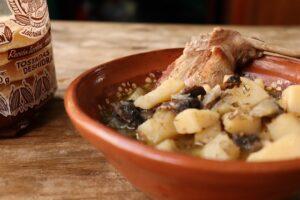Rabbit meat is an excellent source of protein, but it is rarely on Hungarians’ plates
Hungarians undeservedly neglect one of the healthiest sources of protein. Rabbit meat not only has excellent nutritional and physiological properties, it also tastes great. The domestic rabbit sector has undergone significant development in recent years, and although the positive trend has broken this year, the shortage of rabbits on the Western European markets may create an opportunity for domestic actors in the sector to gain market share, according to the overview of the National Chamber of Agrarian Economy and the Rabbit Product Council.

(Photo: Pixabay)
Domestic rabbit meat production has been steadily increasing in recent years, and the positive trend could only be broken by the difficult economic situation that arose as a result of the Russian-Ukrainian war. According to the market overview of the National Chamber of Agrarian Economy and the Nyúl Product Council, the sector achieved a remarkable result in 2022, but in 2023 the decline was even more significant than expected. The phenomenon can be observed not only in our country, the rabbit industry is also in crisis in Western Europe. While at home we can talk about a 20 percent drop in production in 2023, looking at the data of the first half of the year, the French, Spanish and Italian rabbit breeders reported a 30 percent drop. The crisis therefore not only brought difficulties to the domestic rabbit breeders, but also an opportunity: the shortage of rabbits for slaughter caused by the decrease in Western European production can be compensated by the Hungarian rabbit industry – after the necessary developments. In our country, six breeding organizations provide the genetic base, and more than fifty large-scale rabbit farms are engaged in rabbit breeding. In 2022, a total of 10,335 tons of live rabbits were produced. Slaughterhouses process almost entirely domestically produced Hungarian rabbit, the two large slaughterhouses account for 99 percent of all Hungarian production.
Although rabbit meat is an excellent source of protein, its consumption is unfortunately not widespread among Hungarians, and the domestic rabbit sector is therefore significantly export-oriented
For this reason, in addition to the European Union regulations, producers must meet the requirements of foreign buyers, which are often even stricter than those of the EU. Hungarian rabbit breeders and processors have demonstrated their commitment and efficiency in the field of sustainability and animal welfare in numerous quality assurance systems.
The development of the rabbit industry has been hampered by several factors in the past period
In addition to the problems affecting other animal husbandry sectors – the rapid increase in production costs, the inflation caused by the Russian-Ukrainian war – the rabbit breeders also had to face the challenge caused by the so-called RHD epidemic, which is growing on a global scale. The National Chamber of Agrarian Economy – as it has done in the past – will continue to help with all available means the actors of the rabbit sector in being able to continuously ensure the supply of domestic and foreign markets with safe and nutritious domestic rabbit meat.
Rabbit meat is easily digestible, low-fat, healthy and tasty white meat, and does not contain any allergens
Among meats, rabbit meat has the highest protein content. Its favorable nutritional and physiological effects make it suitable for people living on a diet, recommended material for young children and the elderly. It is no coincidence that many baby food manufacturers have included it in their product range, it is recommended for babies to eat rabbit meat from the age of four months.
In order to popularize the consumption of rabbit meat in Hungary, the Rabbit Professional Organization and Product Council and the Agricultural Marketing Center have been jointly conducting their national campaign for several years, with the aim of making as many Hungarian consumers aware of the advantages of rabbit meat as possible and the various ways of preparing it.
NAK
Related news
The Ministry of Agriculture is helping dairy farmers with a new tender
🎧 Hallgasd a cikket: Lejátszás Szünet Folytatás Leállítás Nyelv: Auto…
Read more >AM: Tax and administrative burdens for farmers to be reduced from January 1
🎧 Hallgasd a cikket: Lejátszás Szünet Folytatás Leállítás Nyelv: Auto…
Read more >The Ministry of Agriculture supports farmers’ awareness with as many tools as possible in 2026
🎧 Hallgasd a cikket: Lejátszás Szünet Folytatás Leállítás Nyelv: Auto…
Read more >Related news
Fidelity Kitekintés 2026: Ne becsüljük alá az inflációt!
🎧 Hallgasd a cikket: Lejátszás Szünet Folytatás Leállítás Nyelv: Auto…
Read more >Company Trend 2025 – domestic businesses under strong pressure, in a negative trend
🎧 Hallgasd a cikket: Lejátszás Szünet Folytatás Leállítás Nyelv: Auto…
Read more >Surprising ordering statistics: foodora sampled the ordering habits of Hungarians in 2025
🎧 Hallgasd a cikket: Lejátszás Szünet Folytatás Leállítás Nyelv: Auto…
Read more >







